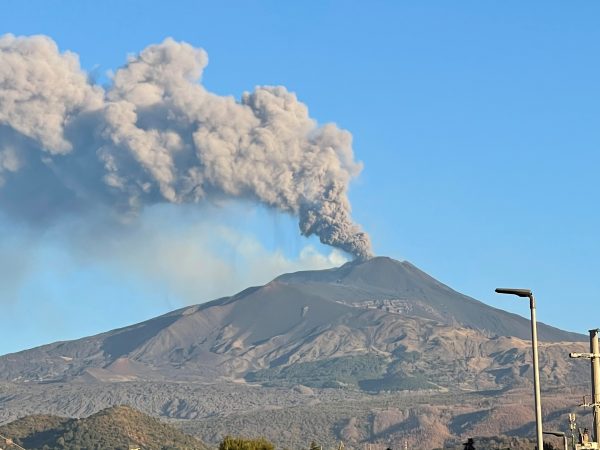MOUNT ETNA
Mount Etna is Europe’s most active volcano and one of the largest in the world. Its recorded volcanic activity dates back to 1500 B.C. Since then, it has erupted more than 200 times.
The current eruptions at Etna have led to flight cancellations at nearby Catania airport.
The use of cars and motorbikes has also been banned for 48 hours due to high amounts of ash on the roads. Ash can be slippery and increases the risk of accidents.

3. Other Volcanos
One of the most famous long-term eruptions was Kilauea volcano on Hawaii. Its spewing spree in 1983 continued — almost nonstop — for 35 years until 2018, only to start again in 2021. The eruption is still ongoing
Dukono in Indonesia started erupting in August 1933 and is still continuing. Santa Maria in Guatemala began erupting in June 1922 and continues to this day.
And Yasur in Vanuatu first rumbled to life in about 1270 (± 110 years) and as of June 9, 2023, was still erupting
4. What is a Volcano?
- Volcanoes represent openings or vents through which substances like lava, small rocks (tephra), and steam are expelled onto the Earth's surface. These formations exist both on land and in the ocean and are a consequence of their own eruptions as well as the broader processes shaping our planet, particularly the movement of tectonic plates.
- Mountain ranges such as the Andes in South America and the Rockies in North America, along with volcanoes, came into existence due to the movement and collision of these tectonic plates.
- There exist four primary categories of volcanoes: cinder cones, composite (stratovolcanoes), shield volcanoes, and lava domes. The classification of a volcano is determined by the manner in which the erupted lava flows and how this flow influences the volcano itself, consequently impacting its surrounding environment.
- In essence, it involves magma, the molten rock beneath the Earth's surface, moving upward and overflowing, similar to how boiling milk spills out of a pot on a stove.
- This molten rock, known as magma, travels through openings in the volcano and is expelled onto the land and into the atmosphere. The term used for magma when it erupts from a volcano is "lava."
Scientists are capable of predicting volcanic eruptions hours, or sometimes several days, in advance. This isn’t the case with earthquakes, which are much harder to predict.
Scientists use seismographic data from earthquakes and other tremors, because those can be a precursor to volcanic eruptions.
6. Way forward
Volcanic activity is a critical part of the Earth's natural processes, contributing to the formation of new land, the recycling of elements and minerals, and even influencing Earth's climate over time. However, volcanic eruptions can also pose risks to nearby populations and ecosystems, making the study and monitoring of volcanoes crucial for hazard assessment and mitigation efforts.
|
Previous Year Questions 1.Consider the following statements: (UPSC CSE 2018) 1. The Barren Island volcano is an active volcano located in the Indian territory. 2. Barren Island lies about 140 km east of Great Nicobar. 3. The last time the Barren Island volcano erupted was in 1991 and it has remained inactive since then. Which of the statements given above is/are correct? A.1 only B.2 and 3 C.3 only D.1 and 3 Answer (A) |
Source: Indianexpress




